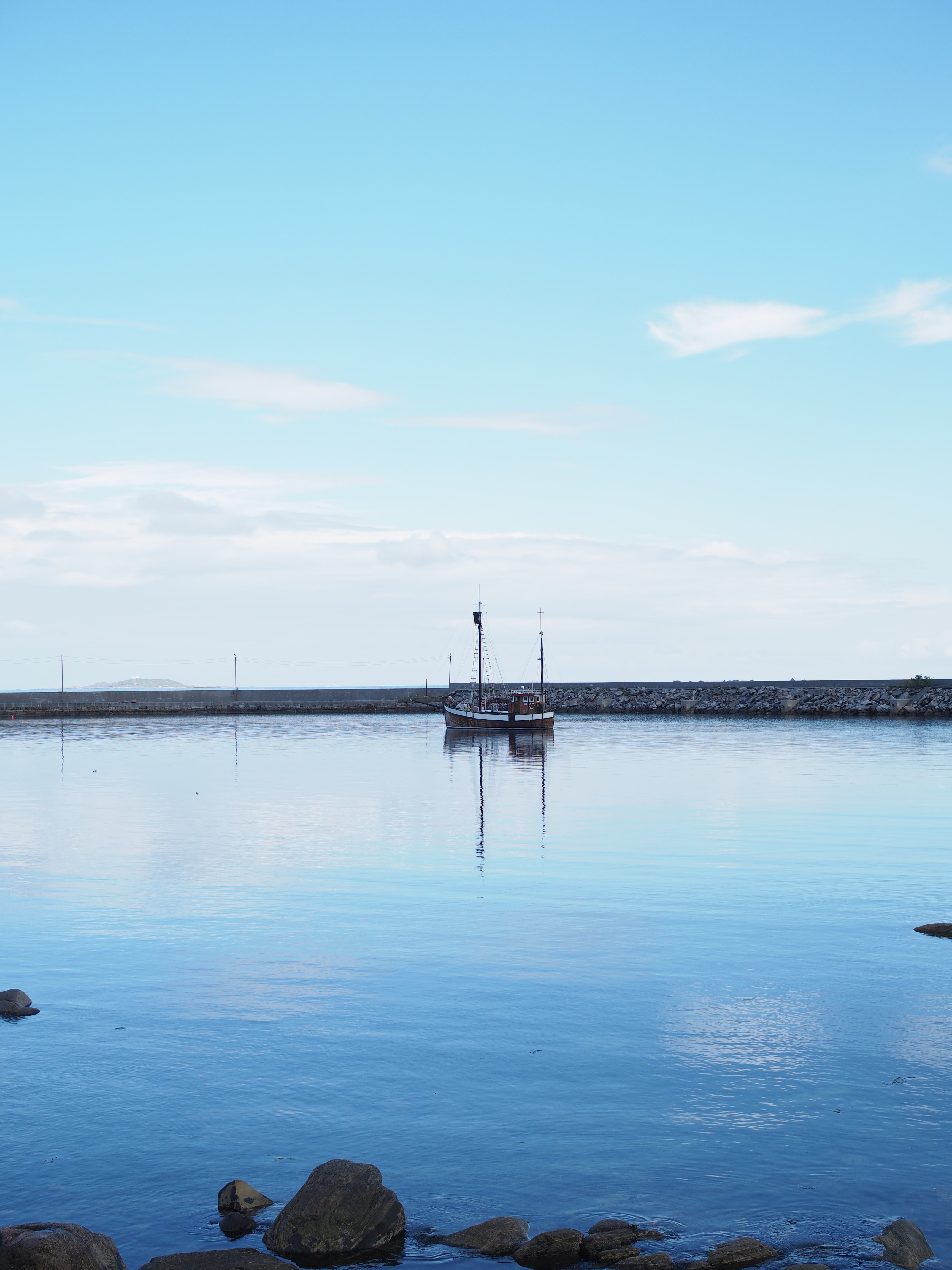 There is a great wonder when you travel throughout Norway, never quite knowing what grandeur will appear around each and every corner. The landscape can change dramatically and each part has a beauty all of its own.
There is a great wonder when you travel throughout Norway, never quite knowing what grandeur will appear around each and every corner. The landscape can change dramatically and each part has a beauty all of its own.
I journeyed throughout parts of western Norway from Lærdal to Molde and back inland through Romsdal and Jotunheimen until I made it home again to Numedal, the Medieval Valley. I went looking for inspiration from the surrounding waters. For recipes. Dishes from the sea, the fjords, the locals. A short time to delve into a few of Norway’s coastal gems. Each place having a marvel of its own and a history and a story to tell.
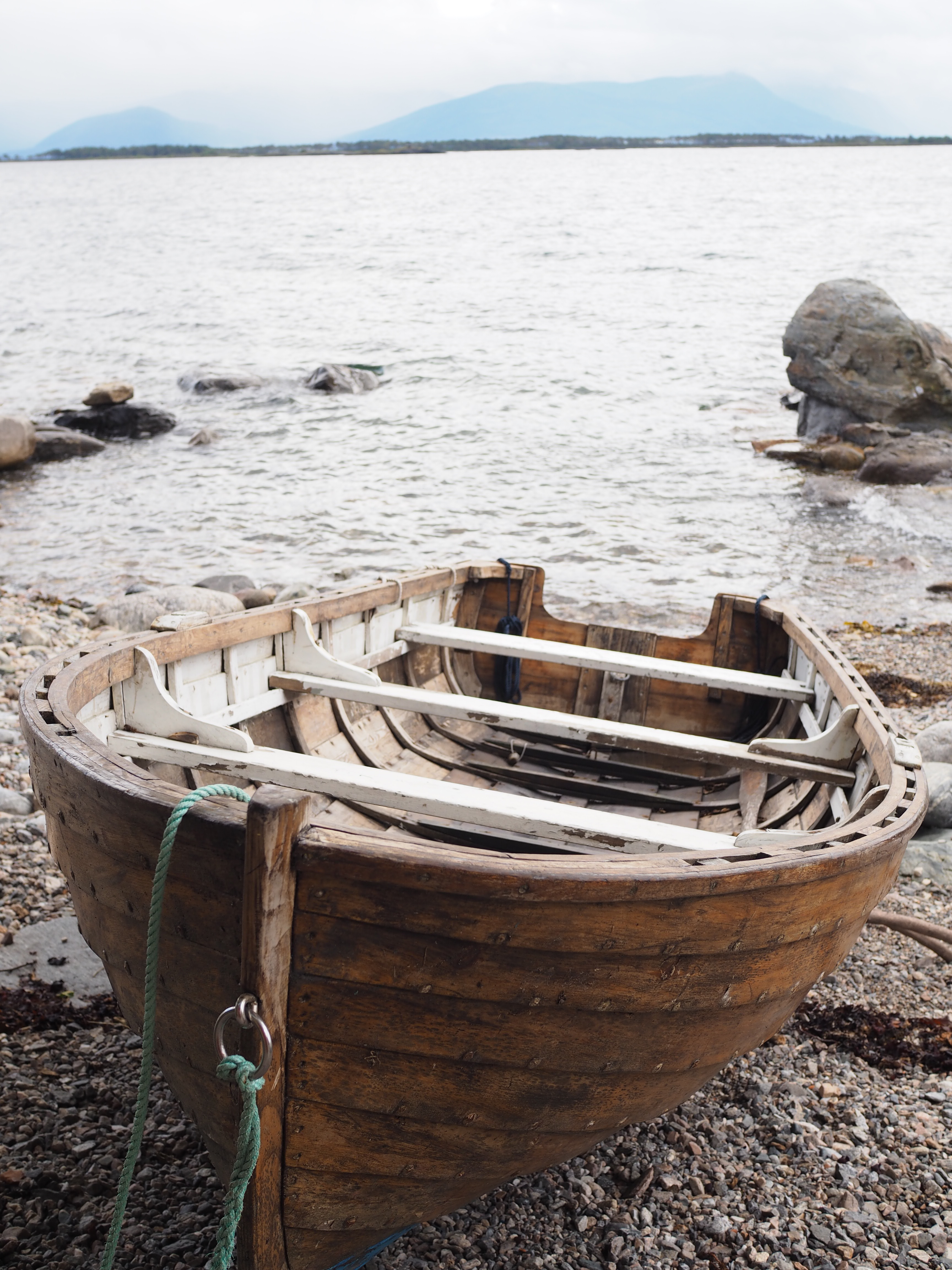 The first stop of the journey was in the heart of Sognefjord in Lærdal. A village with its charming, wooden houses and it’s famous river, Lærdalselvi. The river even earned the nickname “The Queen Among Salmon Rivers” as it was traditionally one of the most exclusive salmon and sea trout rivers in Norway. Known even as King Harald V’s second Queen.
The first stop of the journey was in the heart of Sognefjord in Lærdal. A village with its charming, wooden houses and it’s famous river, Lærdalselvi. The river even earned the nickname “The Queen Among Salmon Rivers” as it was traditionally one of the most exclusive salmon and sea trout rivers in Norway. Known even as King Harald V’s second Queen.
The crystal clear river became a favorite spot for angling after the arrival of the English ‘salmon lords’ in 1850. You can see the influence and prestige Lærdal had by walking through the old city center and passing through the famous Lindstrøm Hotell.
Although the salmon population was drastically depleted after an infestation with the salmon parasite in the fall of 1996, it seems to be looking up these days as the anglers are returning.
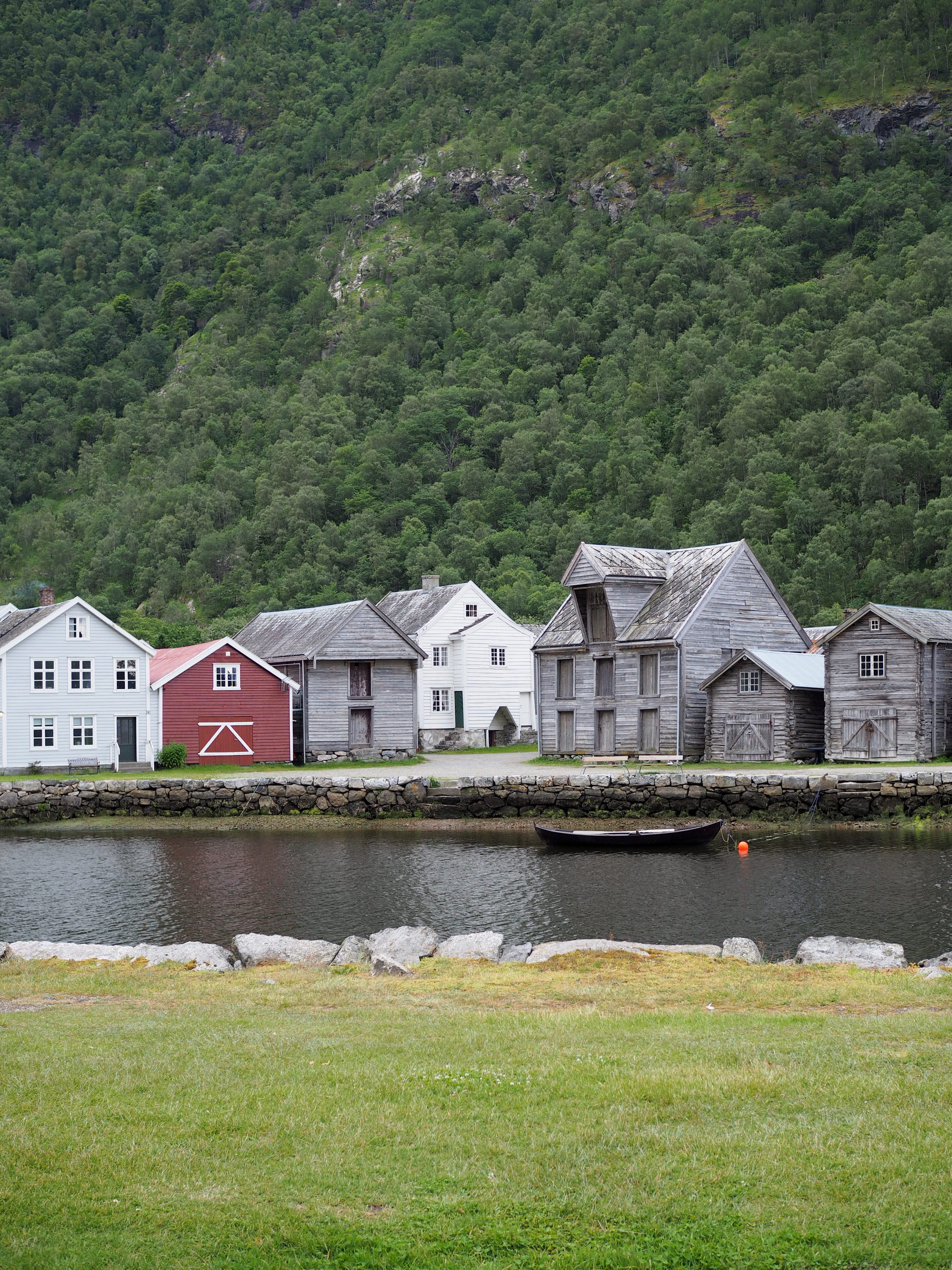
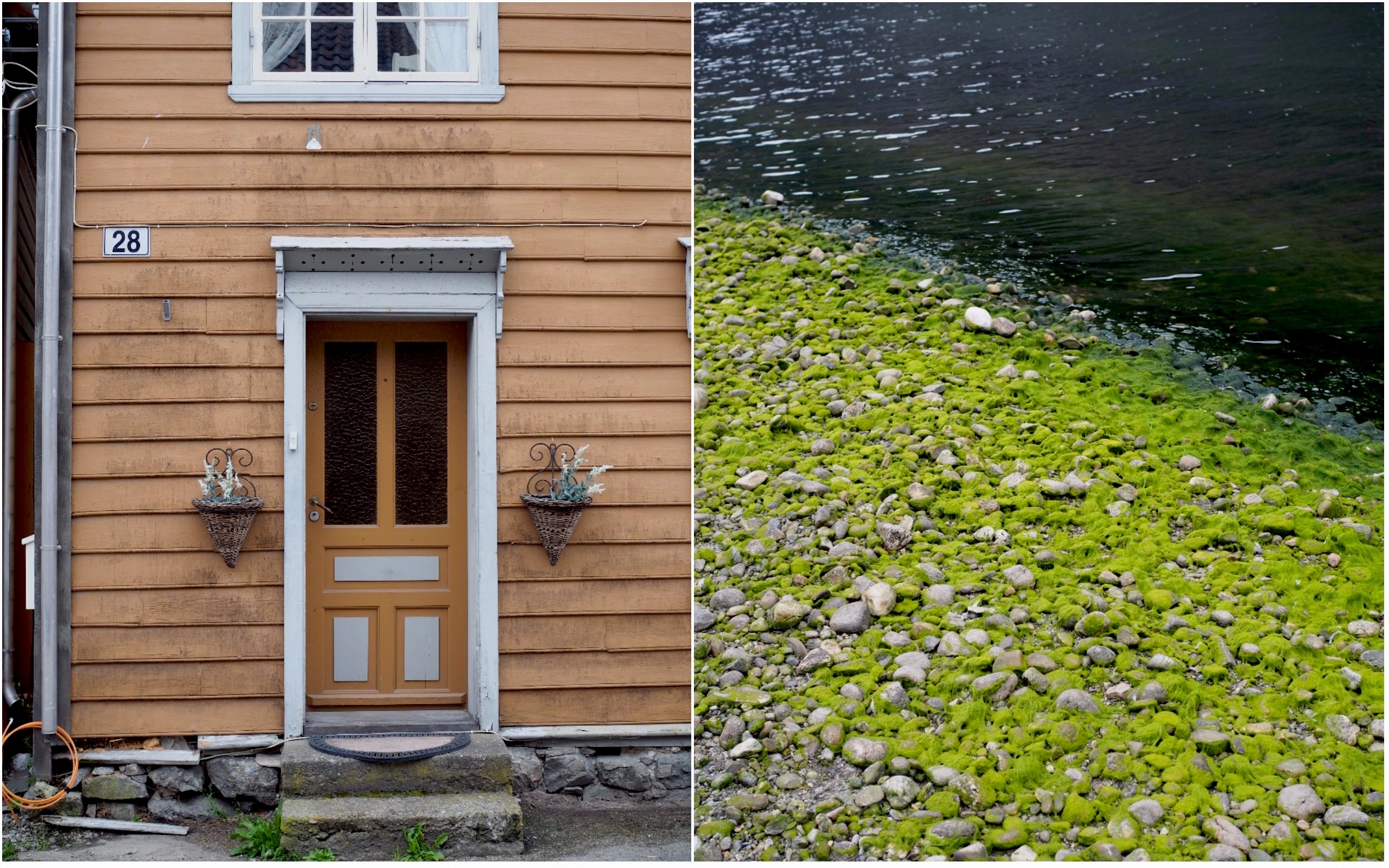
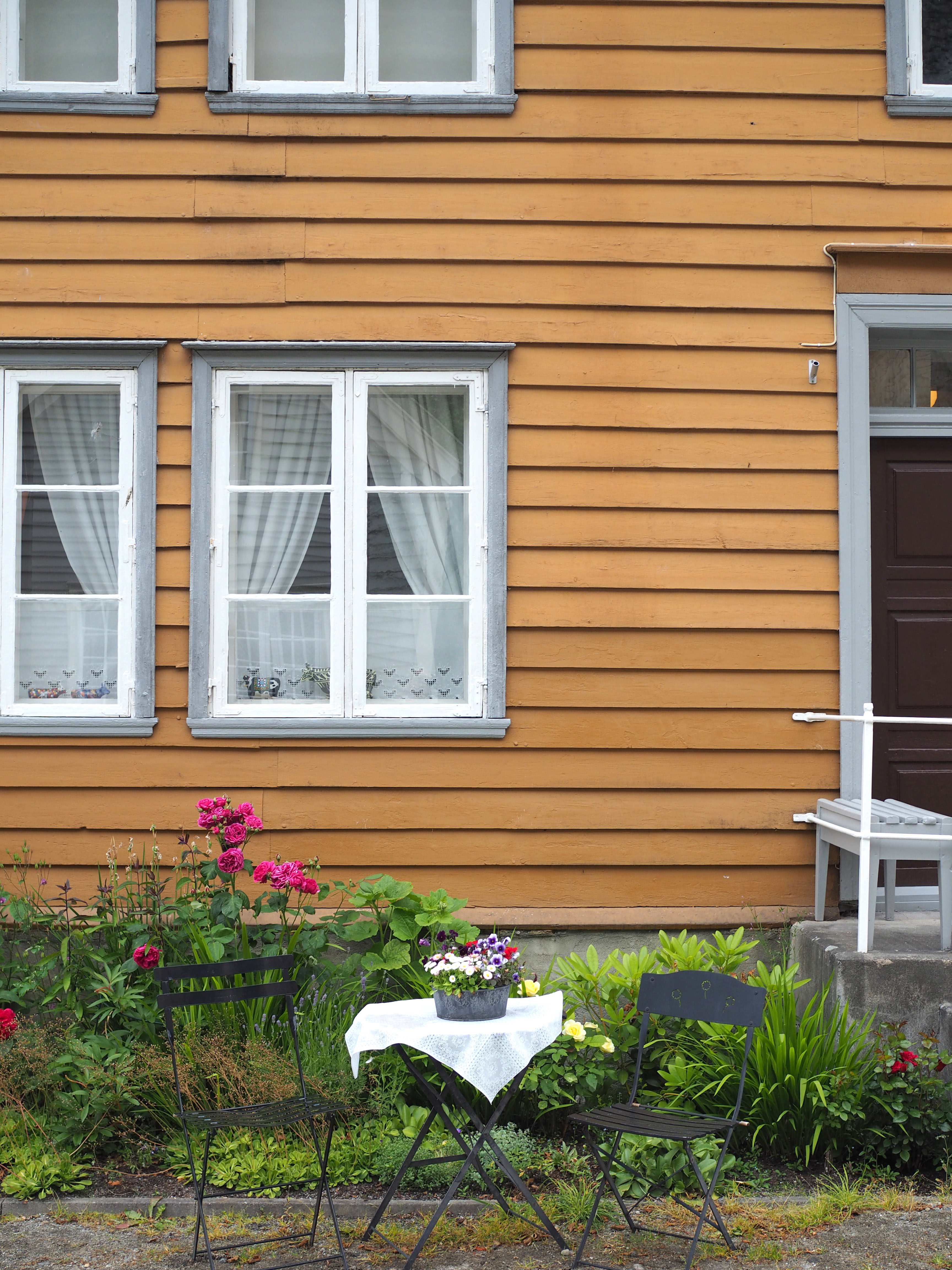 Following Lærdal, we made our way to Loen, located in the inner part of the Nordfjord region. The rain was falling and the landscape was a lush and vibrant green against the tranquil fjord. A cable car now runs to the top, providing incredible views of the landscape below. And a short distance into the valley, Lodalen unveils one of the most breathtaking and inspiring sceneries.
Following Lærdal, we made our way to Loen, located in the inner part of the Nordfjord region. The rain was falling and the landscape was a lush and vibrant green against the tranquil fjord. A cable car now runs to the top, providing incredible views of the landscape below. And a short distance into the valley, Lodalen unveils one of the most breathtaking and inspiring sceneries.
Towering mountains and green waters. Glacier peaks resting high among the clouds. And following a day of rain, a promise in the form of a double rainbow – the ends, of which, were gracing the top of the serene water.
The vibrant green waters derive from clay particles and rock dust, which come from the glaciers cutting through the mountains. The waters carry the clay and dust into the lakes and the fjords below, creating an almost magical scenery you have to see in person in order to truly capture the splendor. 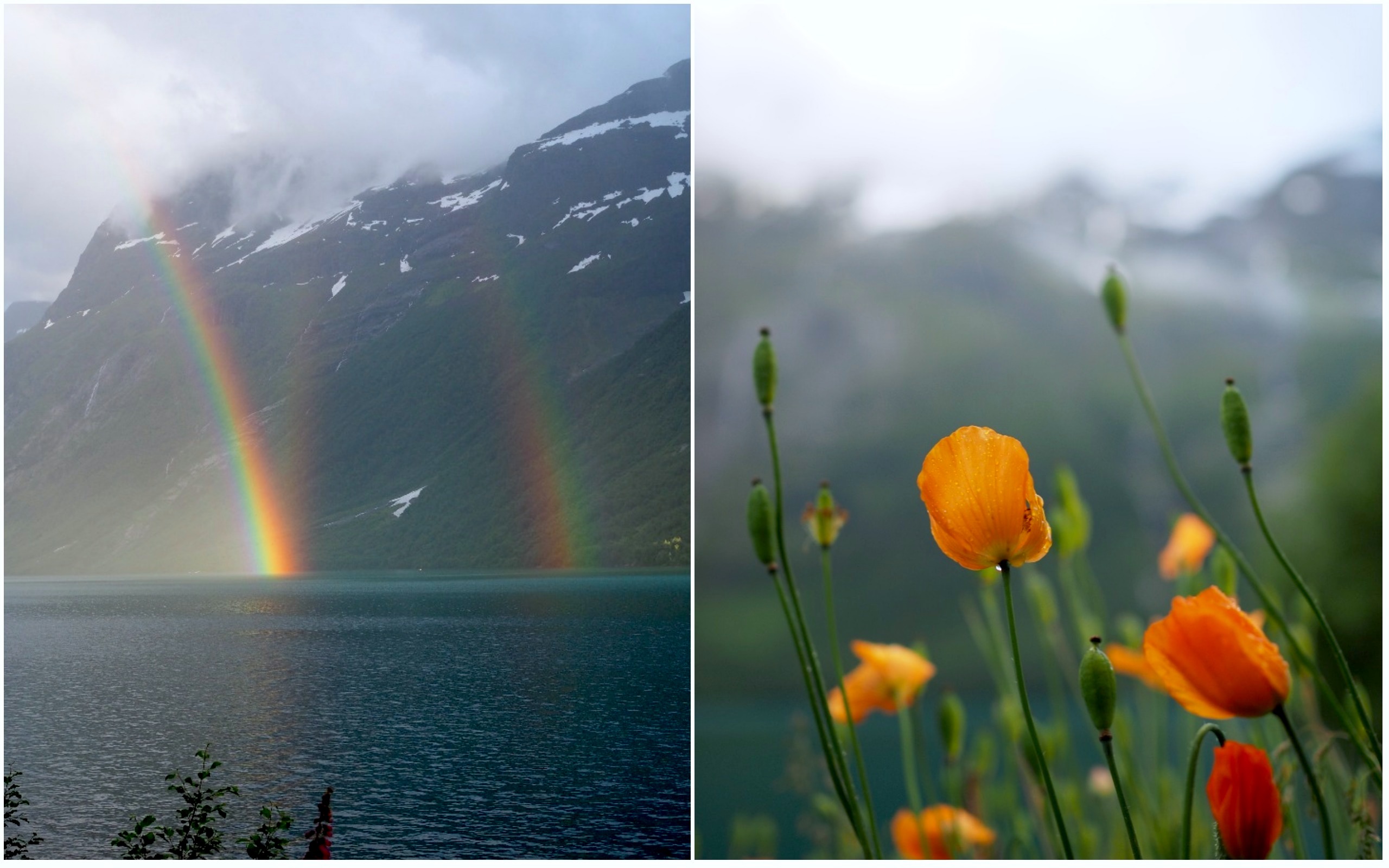
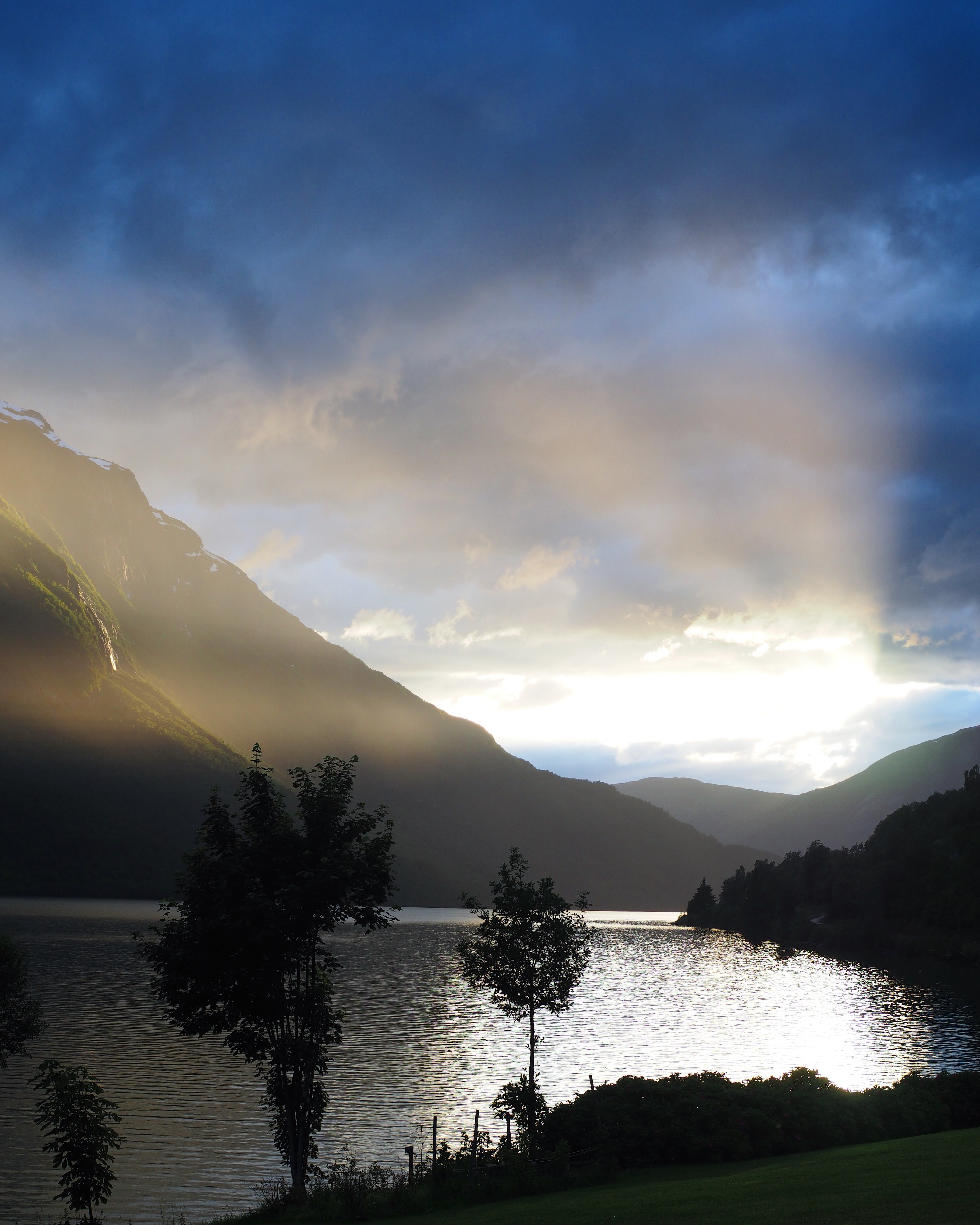
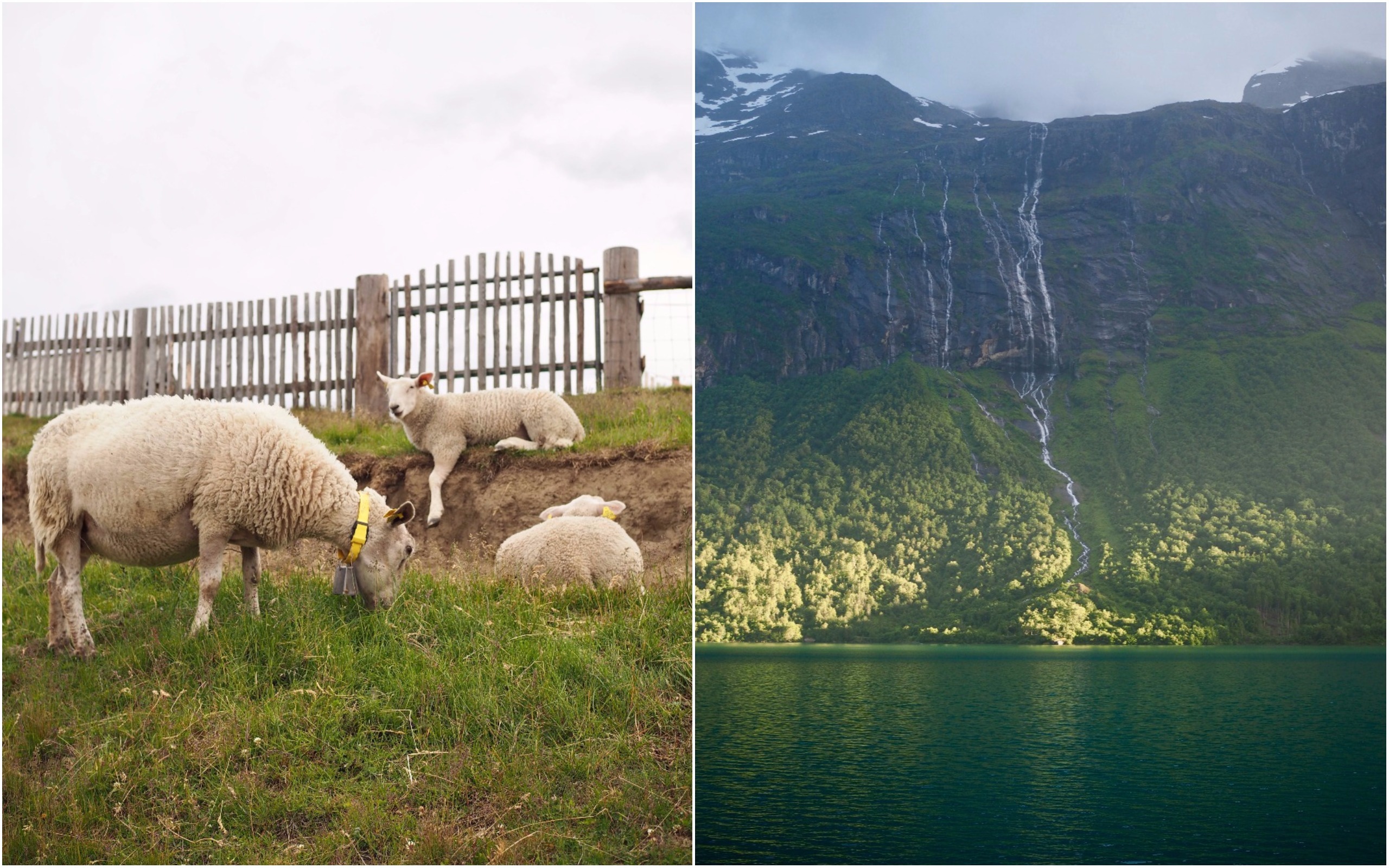 As the rains stopped and the clouds departed, we made our way to Ålesund, a town built on a row of islands jutting out into the ocean. The calm waters reflecting so clearly its Art Nouveau architecture as it boasts a very continental European vibe with it’s beautiful orientation, it’s cafes, it’s stunning views and it’s myriad of boats and nods to the nautical lifestyle.
As the rains stopped and the clouds departed, we made our way to Ålesund, a town built on a row of islands jutting out into the ocean. The calm waters reflecting so clearly its Art Nouveau architecture as it boasts a very continental European vibe with it’s beautiful orientation, it’s cafes, it’s stunning views and it’s myriad of boats and nods to the nautical lifestyle.
A walk of 418 steps upwards brings you to an overarching view of the town and the surrounding islands. It’s a picturesque place that makes a visible stance against the vast ocean backdrop.

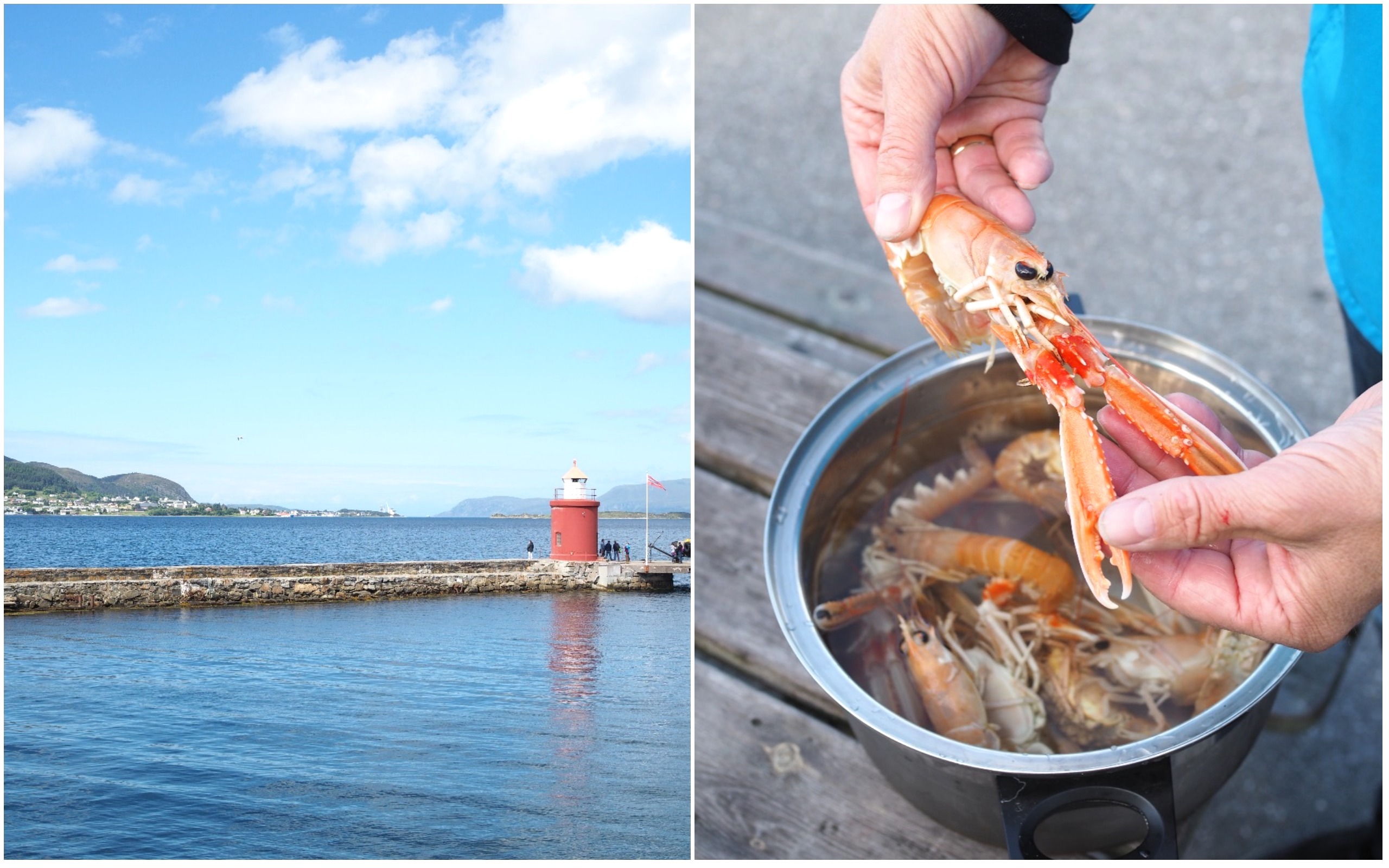
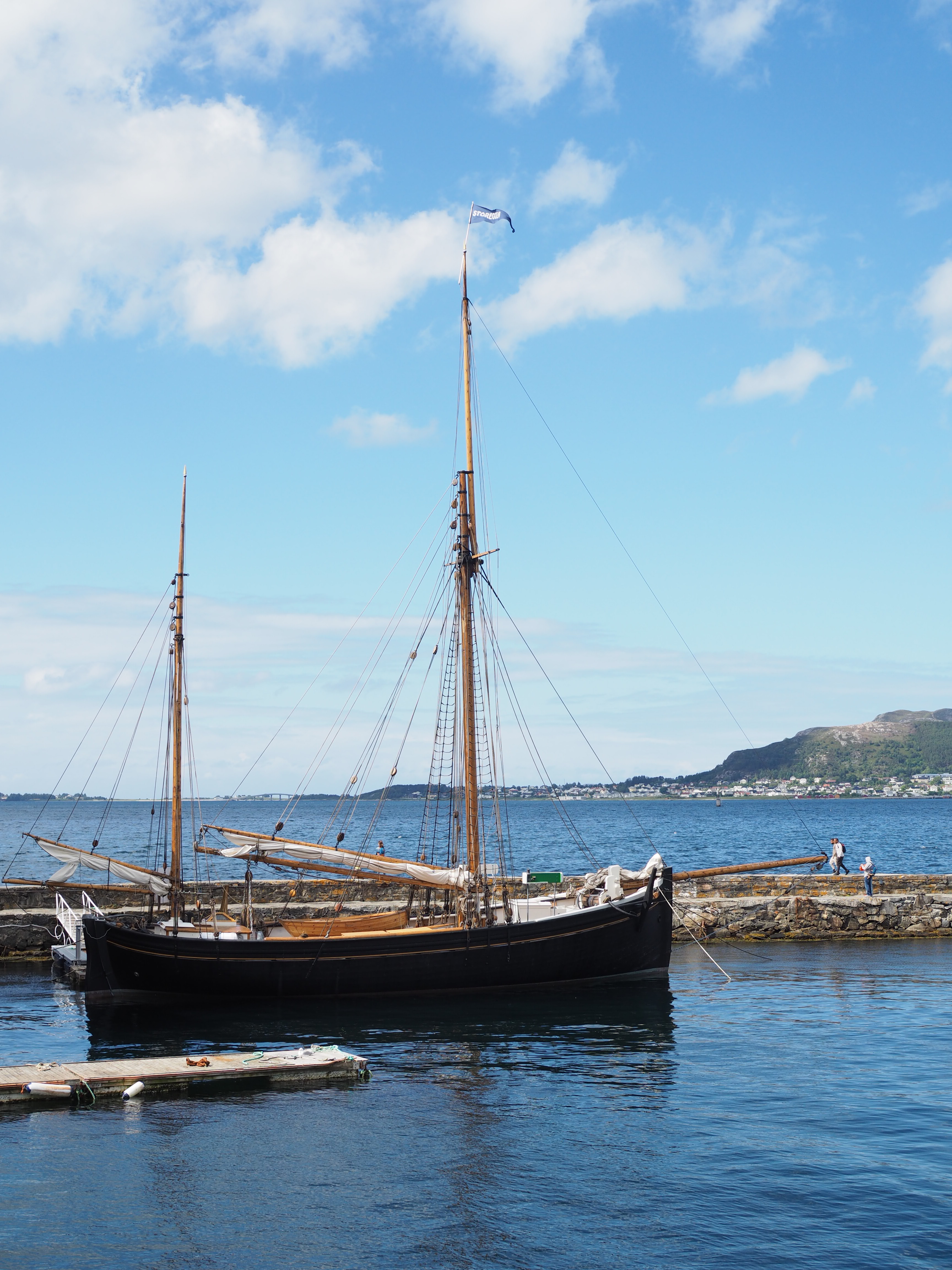 A short drive to the neighboring island of Godøy leads to Alnes. Alnes is a small village that was once one of the most important fishing villages in the entire region. Today, the lighthouse stands out above the wooden houses as it overlooks the ocean and the square-topped mountains.
A short drive to the neighboring island of Godøy leads to Alnes. Alnes is a small village that was once one of the most important fishing villages in the entire region. Today, the lighthouse stands out above the wooden houses as it overlooks the ocean and the square-topped mountains.
The lighthouse has many stories to tell and they are best enjoyed while tasting the delectable treats, such as the famous whipped lingonberry cheesecake from the adjacent cafe. While it doesn’t take long to explore this quaint village, the peacefulness stays with you long after.

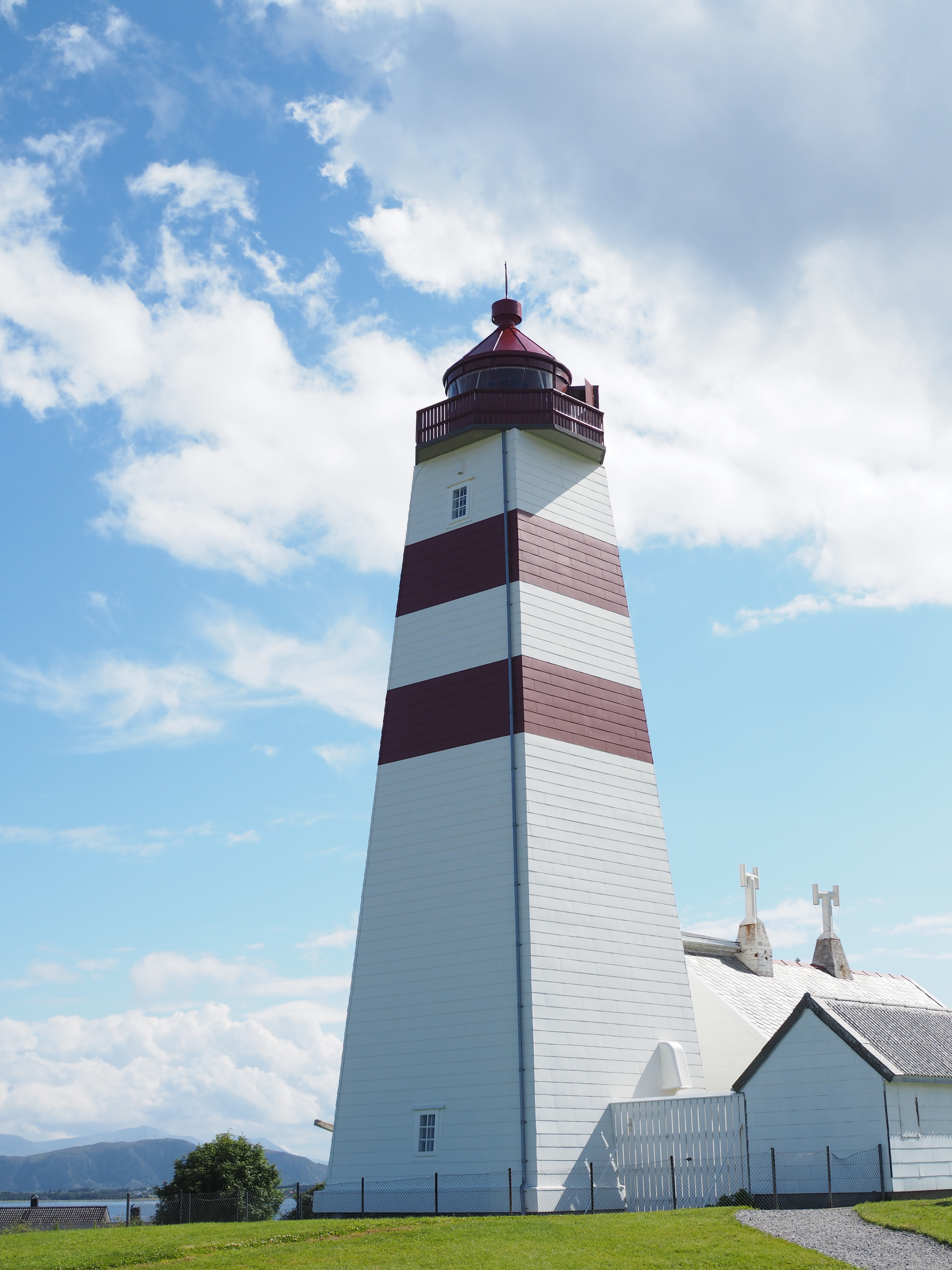
 Further north and a ferry ride leads to the Town of Roses.
Further north and a ferry ride leads to the Town of Roses.
Molde is a vibrant city with an affinity for jazz and roses, among other things. A hike up the mountain brings you to the viewpoint of Varden, where you can experience the panoramic view of 222 mountain peaks. Surrounding Molde are the famous sites of Trollstigen, the Atlantic Road and Romsdalseggen, making Molde a great stopping point to enjoy the sites and the buzz of the city.
We took a little trip to the fishing village of Bud to feast on fiskeboller (fish balls), blandaboller (fish and potato balls), raspeballer (potato balls), boiled meats and sausages and an array of cakes. Afterwards, we took a walk to enjoy the view of the lighthouse and the open ocean before returning to Molde and eventually making our way inland back home.
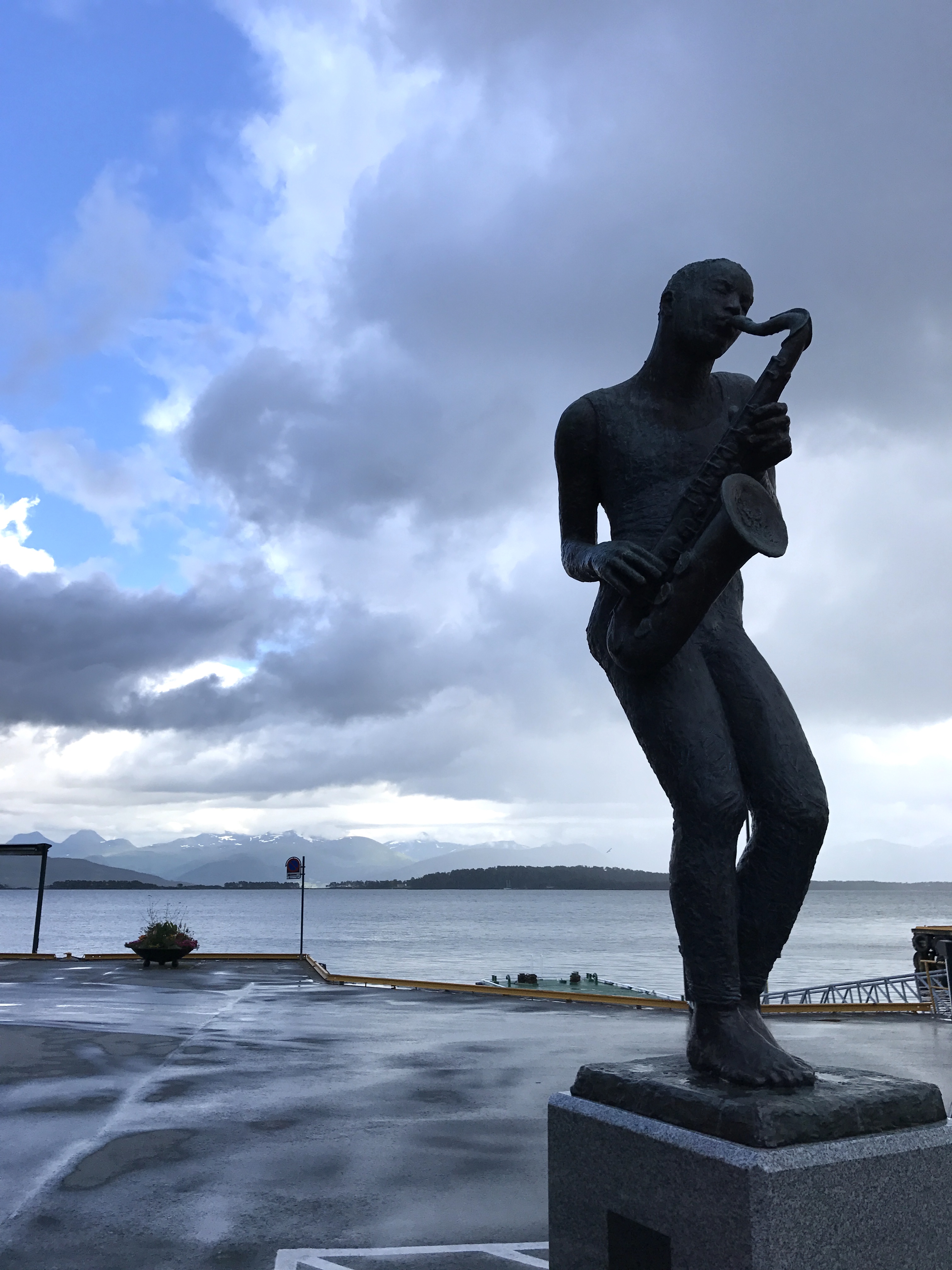
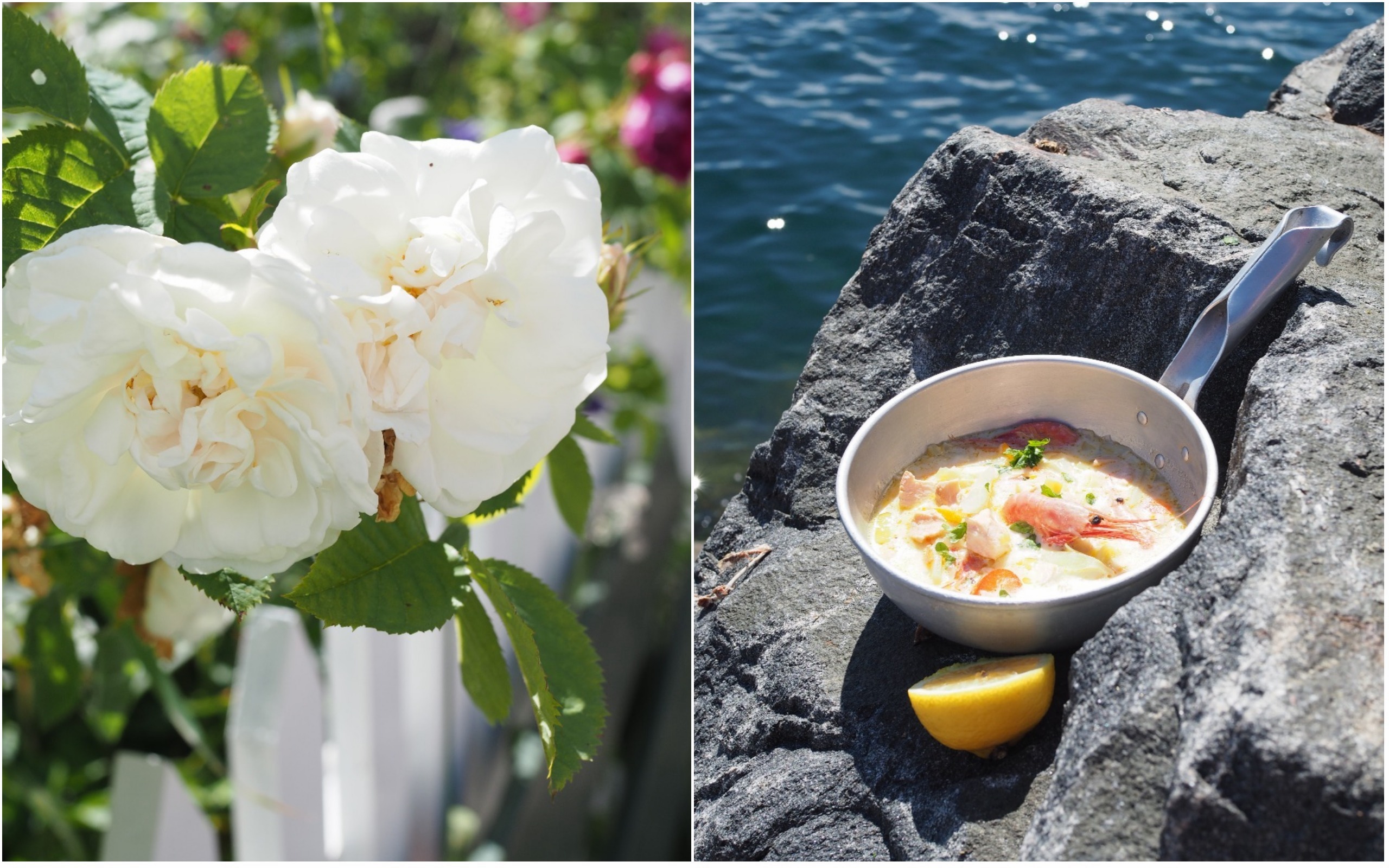
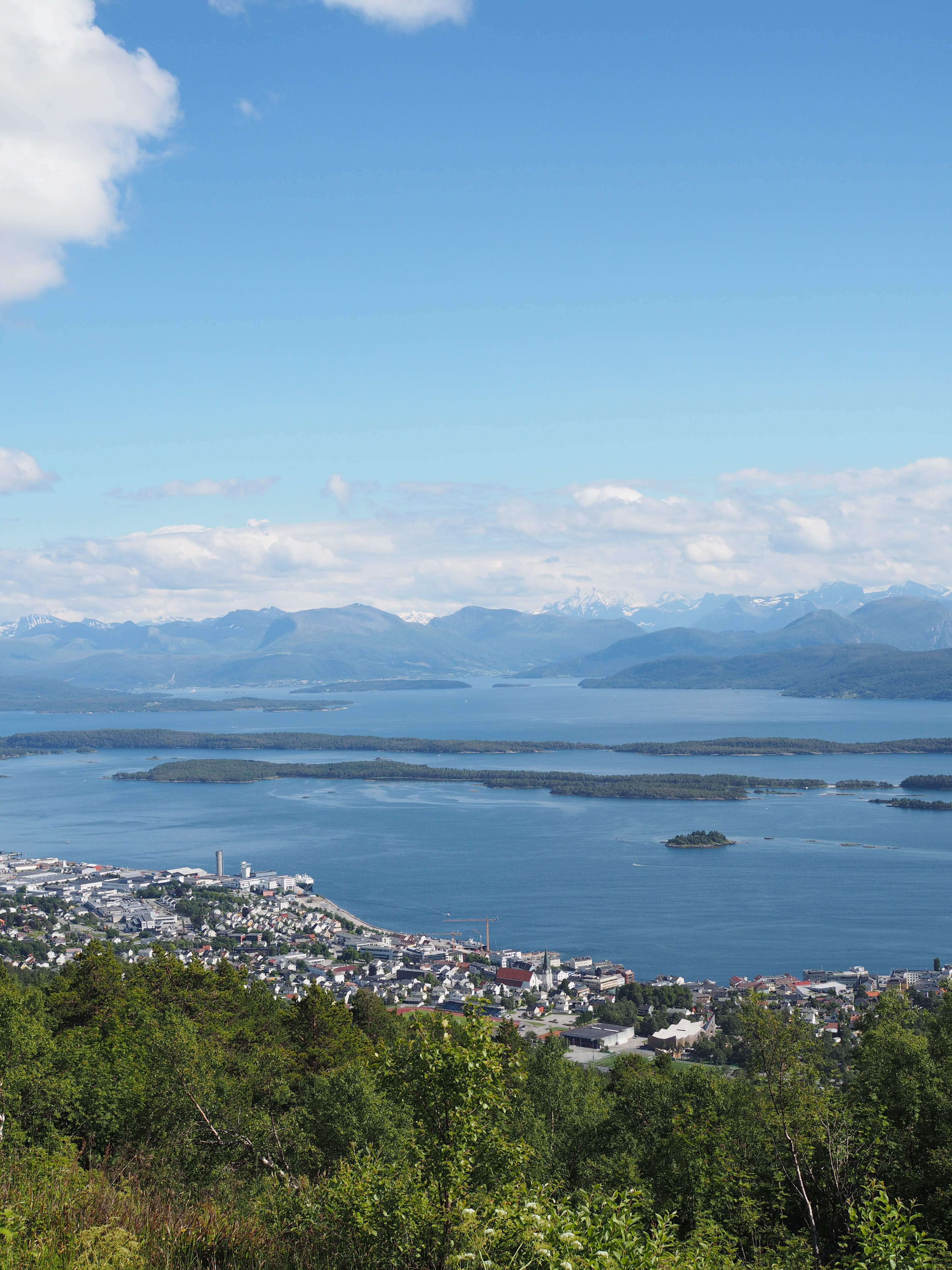 Of course, the journey would not have been complete without making a couple of traditional coastal dishes along the way. A few trips to the local fish mongers ensured I had my hands full of fresh fish and seafood.
Of course, the journey would not have been complete without making a couple of traditional coastal dishes along the way. A few trips to the local fish mongers ensured I had my hands full of fresh fish and seafood.
The days of recipe testing were filled with dried & salted cod stew (bacalao), fish soup (fiskesuppe), crayfish appetizers (kreps) and fish cakes (fiskekaker). All of which will be featured in the upcoming cookbook next year.
But not to withhold so much from you, I am sharing this recipe for classic fish cakes from my Norwegian in-laws. They made these while we were in Molde with fresh pollock from the local monger. They are reminiscent of the fish cakes you will find in stores and boutiques across Norway, with a hint of nutmeg in each bite. Fluffy, with a perfectly browned crust and just the right size to snack on or make a meal out of.
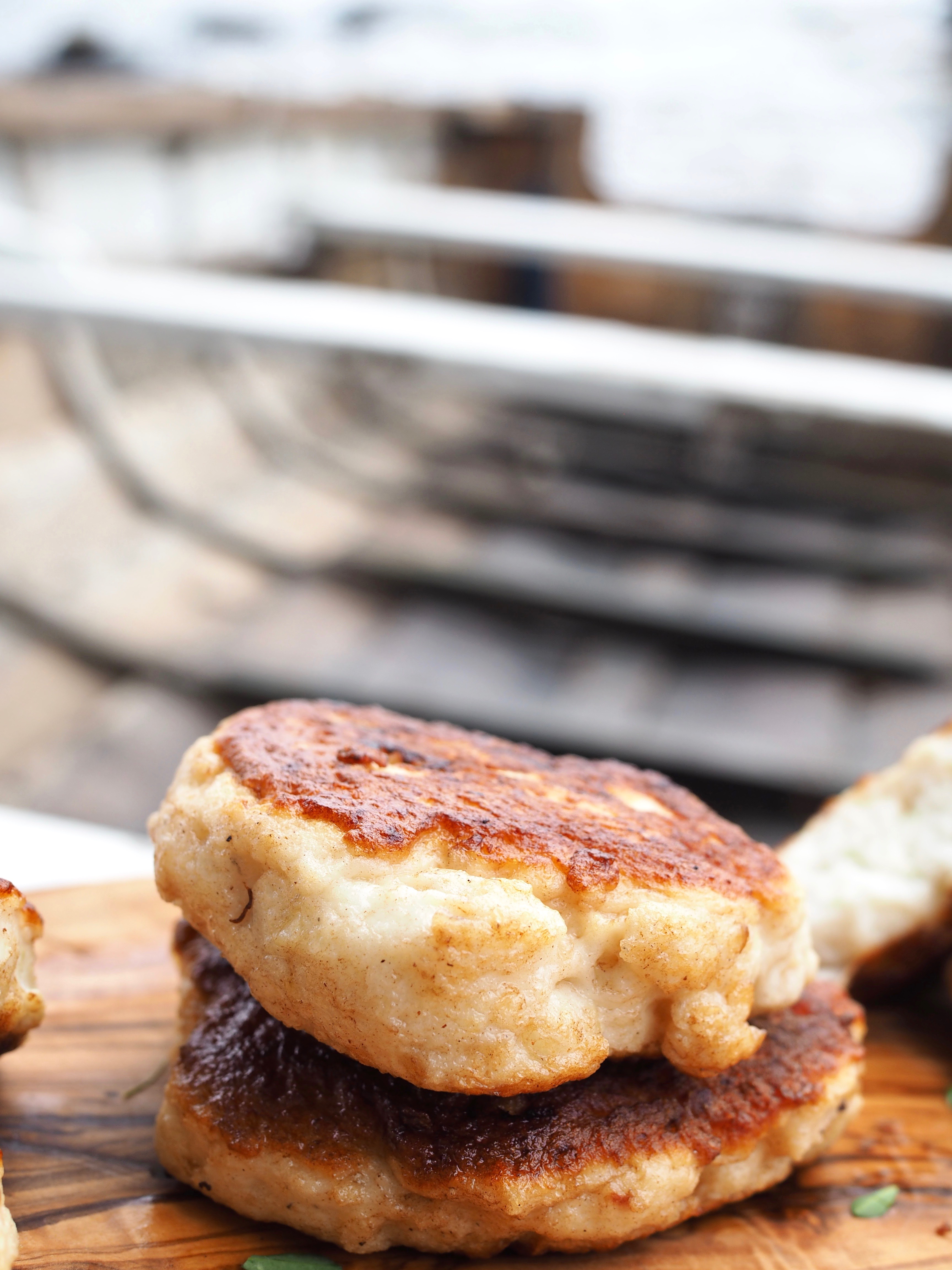
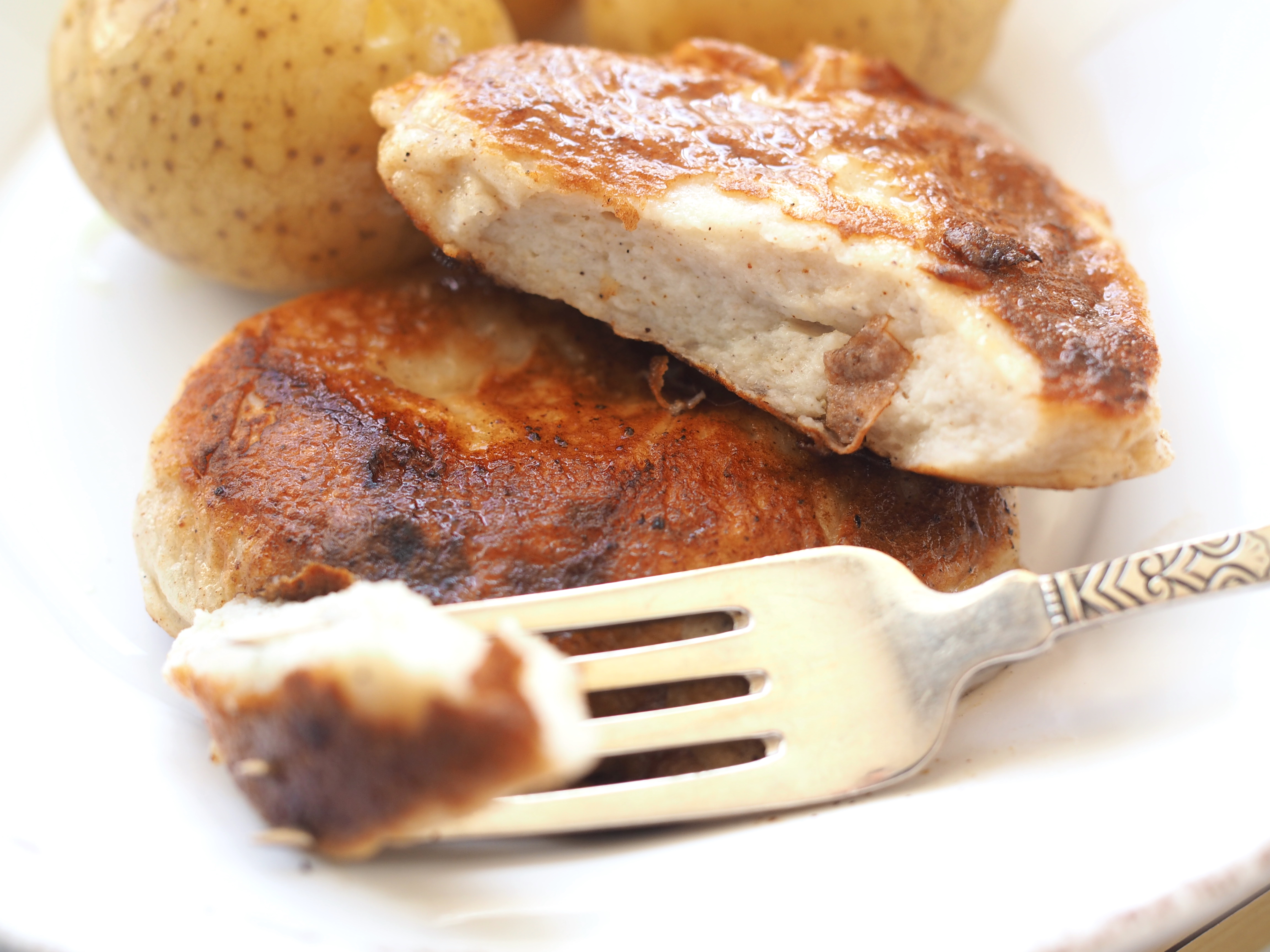
Simple Fish Cakes (Fiskekake)
(Makes around 15 fish cakes)
- 10.6 oz (300g) fresh pollock, haddock or cod (must be fresh, otherwise you will not achieve the desired texture)
- 1 1/4 cup (3 dl) whole milk
- 3/4 tsp salt
- ½ tsp nutmeg
- ½ tsp white pepper
- 2 Tb potato starch
- Butter, for frying
Cut the fish into pieces (ensure there are no bones and no skin). Place the fish in a food processor or blender and start processing. While the machine is going, slowly add the milk followed by the spices and lastly by the potato flour. Process two to three minutes longer. The consistency should be like a semi-thick paste. It should be very smooth.
Heat a large frying pan with a good amount of butter over medium-high heat.
Take a large spoon (dipped in a glass of warm water) and scoop out large spoonfuls of the fish mixture. Shape into rounds the size of a tennis ball with the palm of your hand and place in the pan. Lower the heat to medium and fry a couple at a time, turning them over when they become golden brown. Each side will cook for a couple of minutes. You can check whether they are finished by pressing down on the center of each cake and seeing if they have firmed up quite a bit.
Serve warm. These are delicious on their own as a snack or as a meal with boiled potatoes and drizzled with a little melted butter.
Try these other fish dishes:
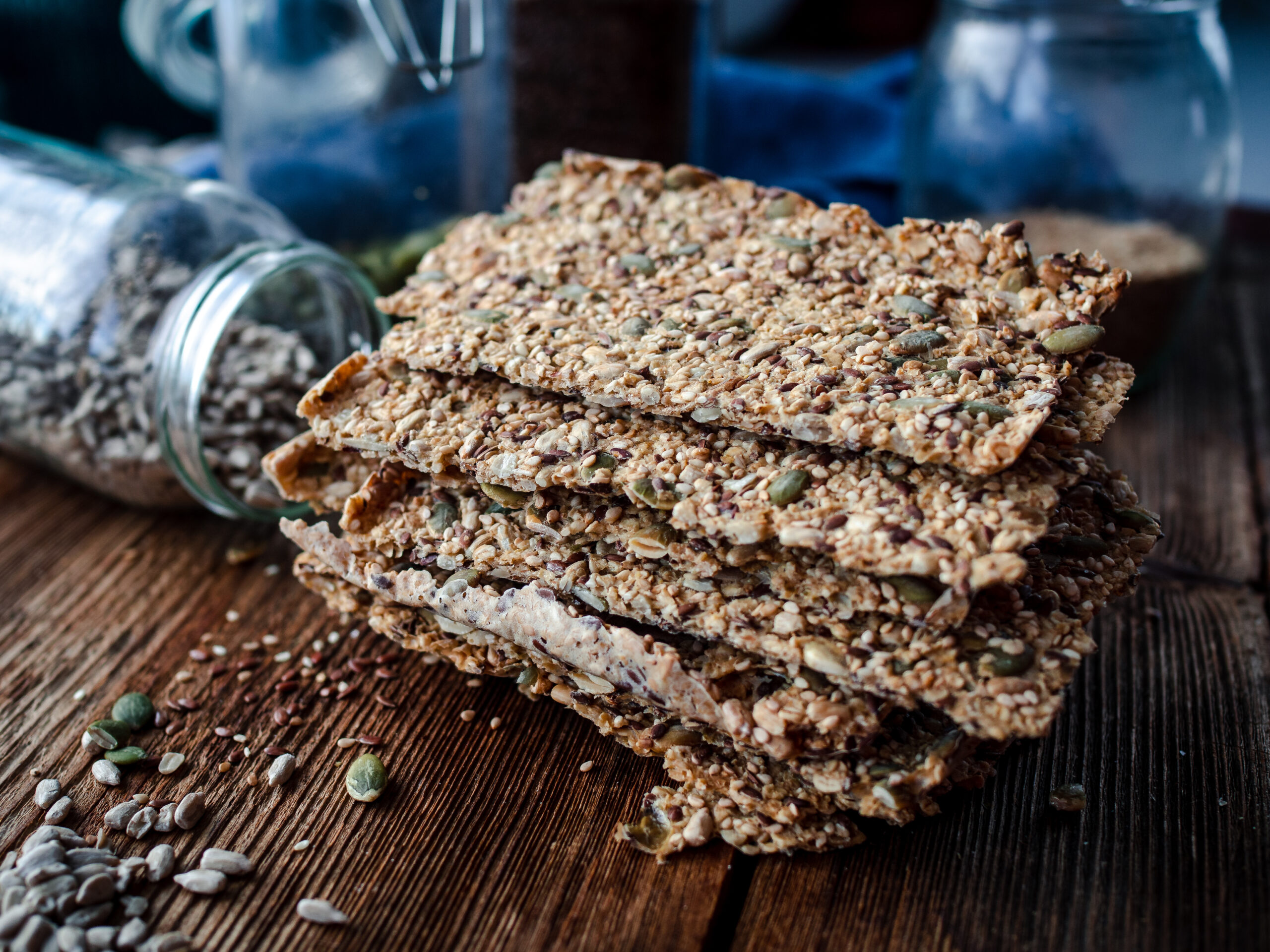
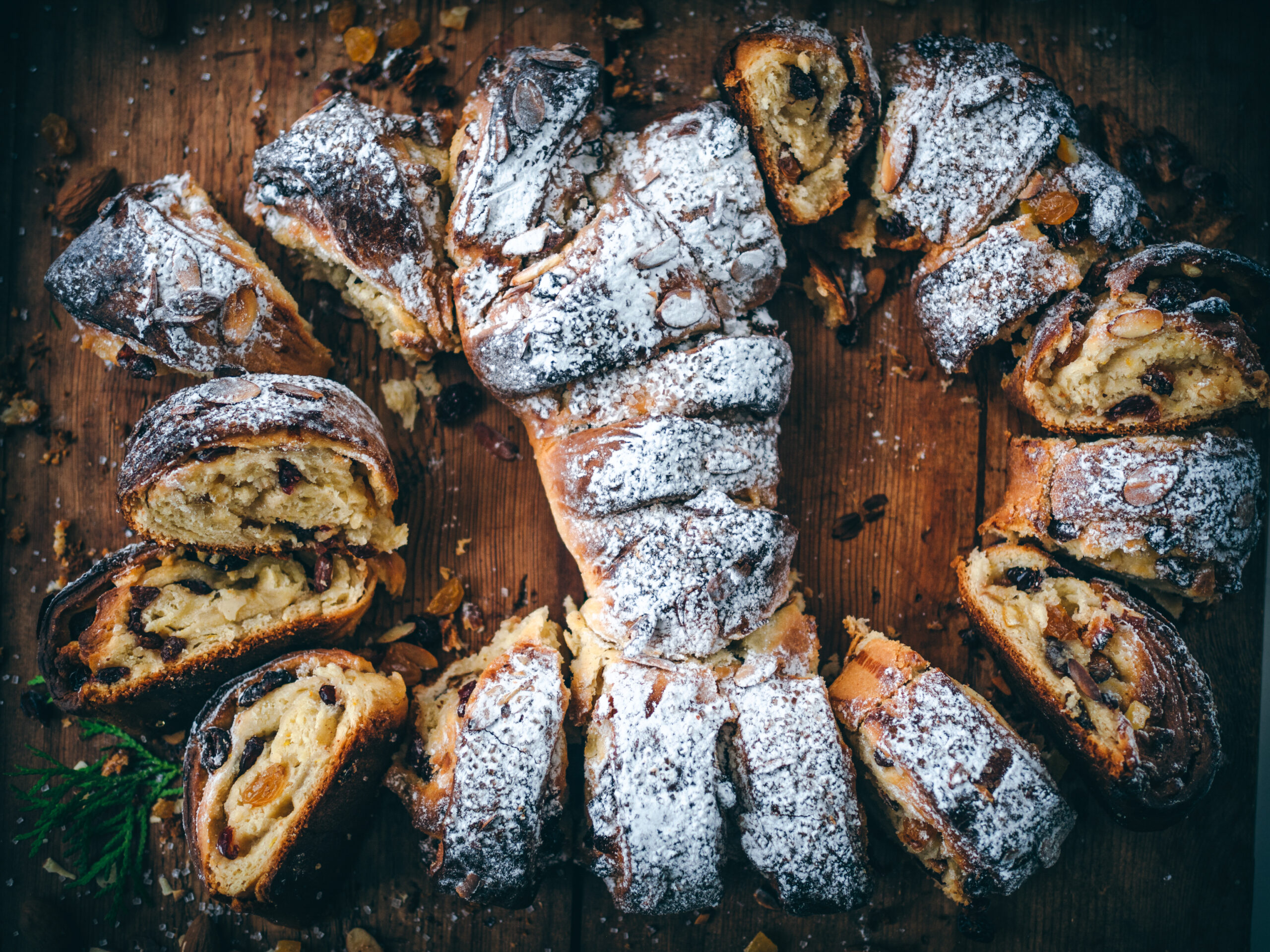

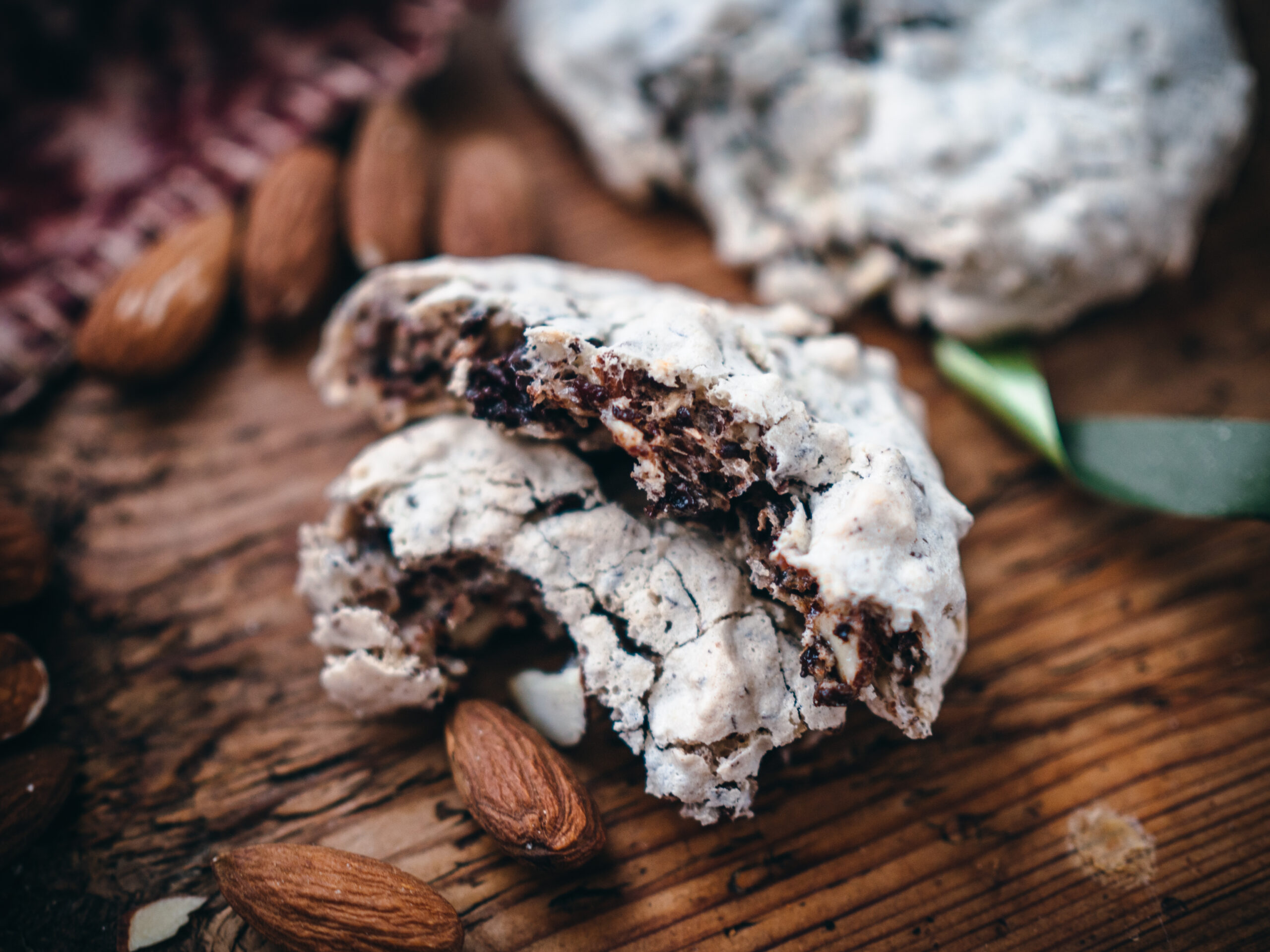
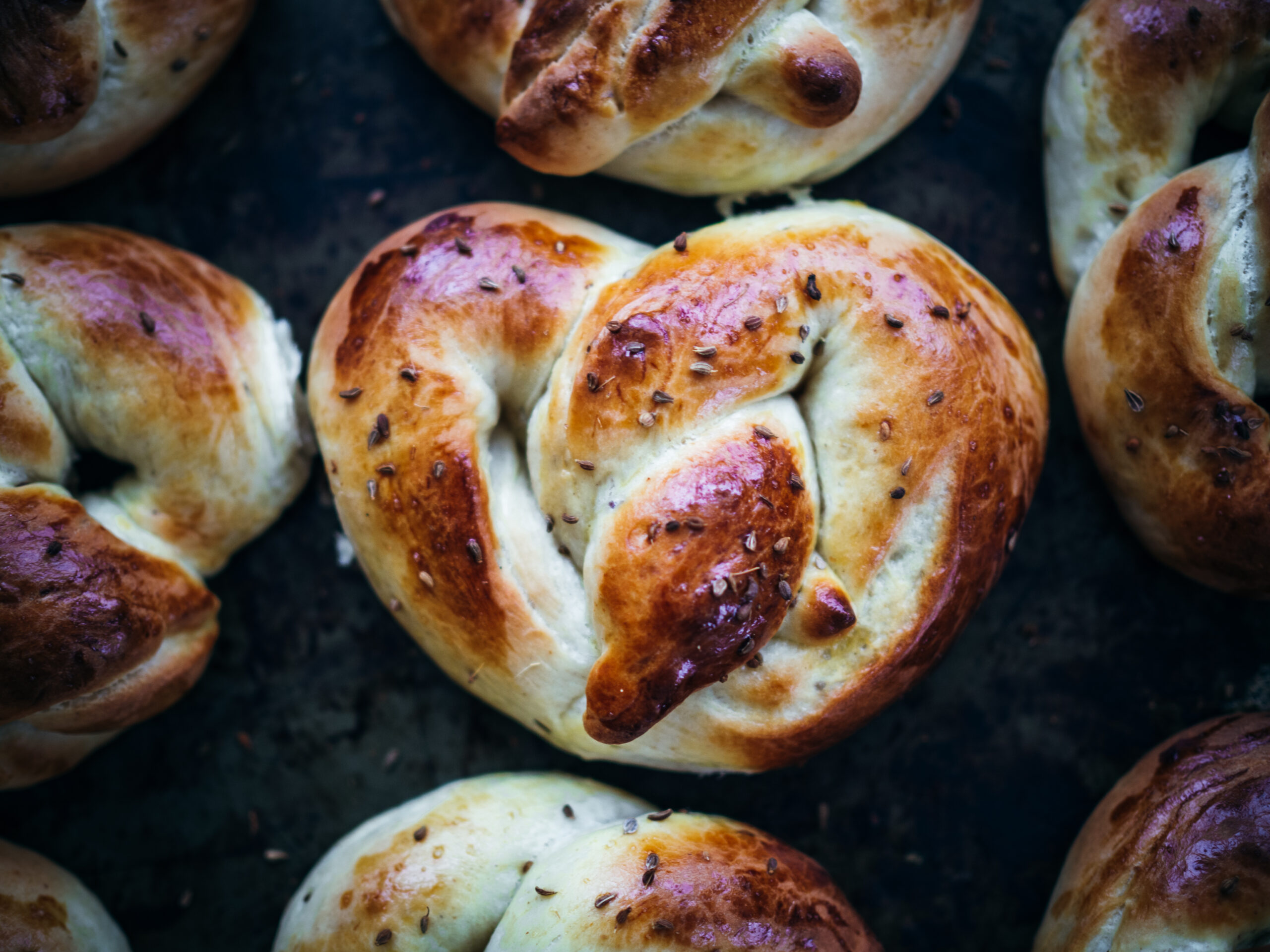
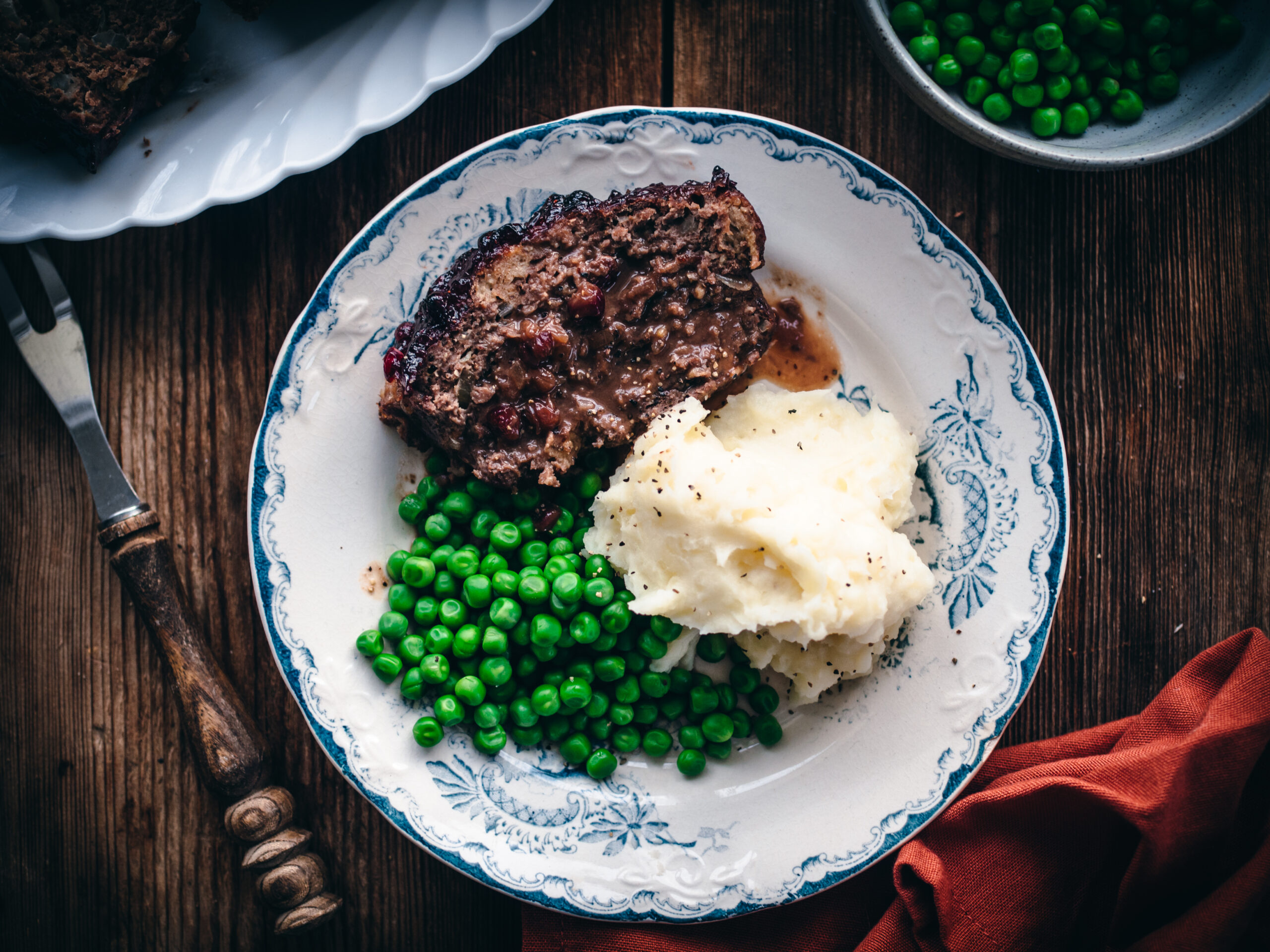
Gorgeous! I’ve only spent a few days in Norway, and I am aching to go back and spend several weeks there, driving from place to place. Thank you for sharing!
Thanks Krystal! I hope you get a chance to visit Norway again soon 🙂
Hey Neveda,
Great photos with amazing view. Have you capture these pics? If so, then you must start a photography blog too 🙂
Hi Ellen. Yes, these photos are taken by me. I’m so glad you enjoy them! Thanks for your kind words 🙂
Beyond gorgeous photos. We are not worthy!
Thanks Carolyn!
Nevada it looks like you had such an amazing trip. All I want to do now is go back and travel around Norway – I had such an amazing time the last time I was there! But for now I will be content with eating Fiskekake! ????
Thanks James! I’m so glad it’s making you want to return 🙂 It’s such an amazing country with so many wonderful things to eat!
That’s it. We MUST visit Norway. How amazing is this place!!! To us here in the Mediterranean this is a totally different scenery from what we’re used to and we honestly LOVED it.
The recipe is also delicious, one small question though: potato flour isn’t available here, and we thought that, instead of using plain flour, to use potato flakes, the ones in store-bought potato puree:) Did you ever try anything similar before?:)
Thank you for -another- beautiful post!
Thank you! I’m so glad you were inspired – Norway is quite a remarkable place!
When making the fish cakes, you need to use potato starch, not potato flour. If you can’t find any potato starch, then you can substitute it with cornflour or arrowroot. The starch does not add any potato taste, so using potato flakes isn’t necessary. I’m not even sure how they would affect the overall result but, by all means, you can test it out and see if you like the taste and texture 🙂
Good job.. what an amazing photos and scenery!! Make me mouth watered and I bet that’s so delicious..
Thank you! I had an amazing time 🙂
These are even better if you fry them in BROWNED butter.
YES!! 🙂
I’m not sure if anyone else had actual made the recipe, I did. It turned out good, but I’d make some minor tweaks.
I would cut the salt and pepper. I’d probably halve the salt amount, and cut the pepper by a third.
I needed to drastically increase the potato starch in order to make these stick together, and I probably should have added more starch. I ended up quadrupling the starch after the first couple test cakes (working my way up to that with test cakes).
I also found I needed to lower the heat as low as I could go to get the right color, but my stove top seems to run not. I was benchmarking fiskekakker that I’ve had in numerous occasions in Arendal.
Hi Jay. Thanks for the feedback! I wonder if the fish you used had a higher moisture content and that’s why you ended up needing more starch. Glad you found a good combination that worked for you in the end!
Hia Neveda
Received you lovely book week. Made your recipe for Blotakake . Just like remember as a child living in Vaeroy
Tomorrow I will be making Fiskekarrer. Can you use potato flour instead of potato starch?
Also, would you kindly share the brown gravy recipe. That’s what my bestemor served fish cakes
Tusen and takk
PS most everything in your book I ate as a child. Now I can pass it on to my children and grandchildren
From the foothills in the rockies near Banff National park
Alberta
Mana Takk
Hi Karin, I’m so happy to hear that you are enjoying the cookbook! You can substitute the potato flour with corn starch – and I’ll keep in mind to share a brown gravy recipe here on the website, but you can use the one I have for the kjøttkaker recipe in the book, it would be the same 🙂
I am Norwegian,from Arendal,and I am living in Mississippi, USA. I am so homesick for some good fishcakes,but I can’t get any of the fresh fishes that you recommend using. We have access to fresh catfish, trout tripletail,salmon,talipa, and steelhead trout plus many kinds of frozen fish. Do you have ant suggestions? Thank you!
Hi Unni! I have another recent recipe on the site for salmon cakes, and you can also use trout 🙂
Your recipe invokes wonderful childhood memories in mormor’s kitchen. I will have to make these – I think with a brown sauce.
Enjoy!
My wife and I recently visited Norway and got to try these in Bergen. They are definitely a treat.